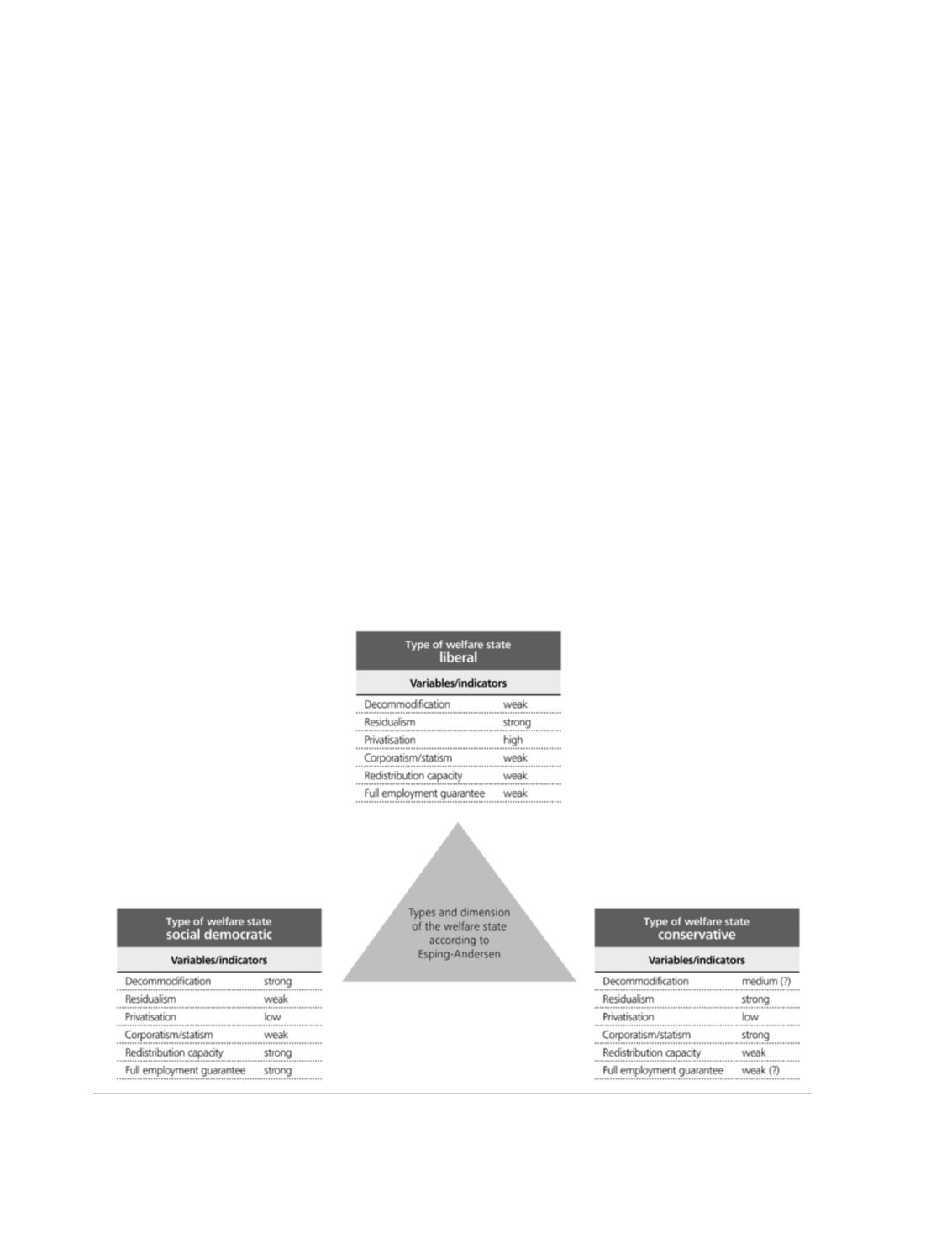

THE STATE OF THE EUROPEAN UNION
120
In the meantime, Esping-Andersen’s ap-
proach has been extended to include two ad-
ditional welfare state types: first, the rudimen-
tary or “Mediterranean” welfare state type,
which expressly includes the countries of south-
ern Europe (Spain, Portugal, Greece, and to
some extent Italy), and second, the post-social-
ist welfare state type found in the transitional
political systems of central and eastern Europe.
The Mediterranean welfare state is character-
ised by the stronger role of the family and the
lower level of social benefits (Leibfried, 1990;
Lessenich, 1995). This group consists of less in-
dustrialised, structurally weak and poorer coun-
tries. Social security systems in this group of
countries are typically only partly developed and
welfare entitlement has no legal basis (Schmid,
2010). One specific feature of this type is the
high degree of employment protection.
The collapse of the Soviet Union and the
transformation of its former Member States
have resulted in a further welfare model being
added. Götting and Lessenich (1998) describe
the post-socialist welfare state as an authoritar-
ian re-modelling of the social democratic wel-
fare type (
ibid.
, p. 272). The transformation to-
wards a welfare system in accordance with the
western European model is described as gradu-
al and features both old and new characteris-
tics. According to Götting and Lessenich (1998),
the post-socialist states are a mixed form: “the
post-communist welfare states are currently in-
stitutional hybrids” (
ibid
., p. 274).
Chart 1.
Types and dimensions of welfare states according to Esping-Andersen



















